Home Remedies For Common Cold: 27 Easy Natural Remedies
Combat runny nose and other cold symptoms with natural remedies from your pantry.

Image: Shutterstock

The common cold can be a real pain with uncomfortable symptoms like sneezing, a runny nose, and a heavy feeling in the head. People tend to slight this condition by saying, ‘It’s just a cold!’ But if you have experienced it, you likely understand how terrible it feels. But fret not – as the common cold, though one of the most prevalent illnesses, is also the easiest to treat at home. Check out these home remedies for a common cold. This article goes over these home remedies in depth. Continue reading to learn more! It’s critical to understand how a cold develops so that the best treatments can be created and implemented.
Let’s start with a deeper insight into the common cold: its causes, signs, and symptoms, as well as the stages in which it develops. Scroll down for more information!
In This Article
Common Cold Signs And Symptoms
You may experience a combination of these symptoms –
- Sneezing
- Nasal congestion
- Runny nose
- Scratchy throat
- Cough
- Headache
- Muscle aches
- Postnasal drip
- Decreased appetite
- Sore throat
- Watery eyes
Fever may or may not be present. Usually, children experience feverish feelings with temperature ranging between 100oF to 102oF (1, 2). Read on to know how exactly a cold is caused.
Key Takeaways
- The common cold is mostly seen in infants, children, and individuals with a weak immune system.
- Symptoms include a runny nose and scratchy throat.
- Gargling with hot water or using a humidifier helps improve nasal congestion.
- Drinking a cup of green tea, turmeric milk, or hot soup can help combat the common cold.
Common Causes Of Cold
When you come in contact with the cold virus, it can easily infect you and cause the various symptoms mentioned above. Different types of viruses are known to cause the common cold of which the rhinovirus is most common one. An individual with a weak immune system as seen in infants and children is more prone to getting affected by the common cold (1, 2).
In most instances, a cold does not persist for very long. Some people may get relief in a few days, though a cold lasting for a week or more is not very uncommon. Find below the stages of a cold.
Stages Of A Cold
When you first contract the virus, the first day or two remain symptom-free. At this juncture, the viruses that escape the body’s immune response start to incubate and replicate within the body. From day three, you start to experience mild symptoms of nasal irritation and congestion. This soon progresses to other symptoms like a runny nose, sneezing, and muscle aches as the virus keep replicating and invade the cells. After day six or seven, you start to feel better because by then the body’s immune response has been successful in beginning the elimination process of the virus by producing the right antibodies. On an average, after 7-8 days, the cold symptoms start to go away by themselves.
According to a report published by the Centers for Disease Control and Prevention, peak flu activity occurs in February. Most of the time, however, flu activity peaks between December and February. This graph represents flu activity in the US during the flu season by month between 1982 and 2025. During this period, flu activity peaked the most in February (17 seasons).
According to a CDC report, from September 2025 to May 2025, 1,899 (0.2%) of the 1,081,671 clinical samples tested were positive for an influenza virus, with 713 [37.5%] cases of influenza A and 1,186 [62.5%] cases of influenza B. In the same period, public health labs reported 61.4% of influenza A and 38.6% of influenza B samples that tested positive.

Peak Flu Season In The US
Source: Flu SeasonFor a majority of people, the OTC (over the counter) medications for cold and cough are the most sought after methods to battle the condition. However, most of these medications just suppress cold instead of giving long-term relief. You can opt for various homemade and natural remedies to get relief from cold and cough.
Below listed are the top natural and home remedies for common cold, which you can try for quick relief.
Home Remedies For Common Cold
- Apple Cider Vinegar
- Epsom Salt Bath
- Essential Oils
- Garlic
- Ginger
- Green Tea
- Honey
- Best Juices
- Kombucha
- Kadha Recipe
- Onion
- Vitamins
- Yogurt
- Turmeric Milk
- Soup
- Elderberry
- Humidifier
- Baking Soda
- Black Pepper
- Cinnamon
- Grapefruit Seed Extract
- Olive Leaf Extract
- Fish Oil
- Gargling With Hot Water
- Chamomile
- Fenugreek
- Pomegranate Juice
Natural Ways To Treat Cold
1. Apple Cider Vinegar For Common Cold
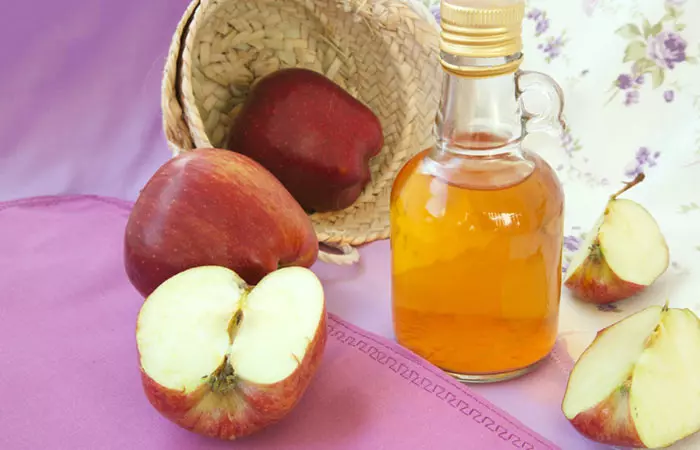
You Will Need
- 1 tablespoon apple cider vinegar
- A glass of warm water
What You Have To Do
Add the vinegar to the warm water and drink it. You can add some local raw honey to the mixture to make it more palatable.
How Often You Should Do This
Drink 2-3 glasses of this in the day.
Why This Works
ACV contains acetic acid, which allows it to re-balance the pH levels of the body and makes the environment unsuitable for the virus to survive (3).
 Quick Tip
Quick Tip2. Epsom Salt Bath For Common Cold
You Will Need
- 1 cup Epsom salt
- A bathtub
- Warm water
What You Have To Do
- Fill the bathtub with warm water. Keep the water as hot as you can bear.
- Add Epsom salt and mix it in the water.
- Soak in this for 20 minutes or so.
If you do not have a bathtub at home, soak your feet in a bucket of warm water with 1/4 cup of Epsom salt in it.
How Often You Should Do This
Repeat this every alternate day until you get relief from the cold symptoms.
Why This Works
To decongest the nasal passage and get relief from body fatigue caused by cold, it is ideal to take a steam bath.
By adding Epsom salt, you can help increase magnesium in the blood (4). This may help relax your aching muscles.
3. Essential Oils For Common Cold
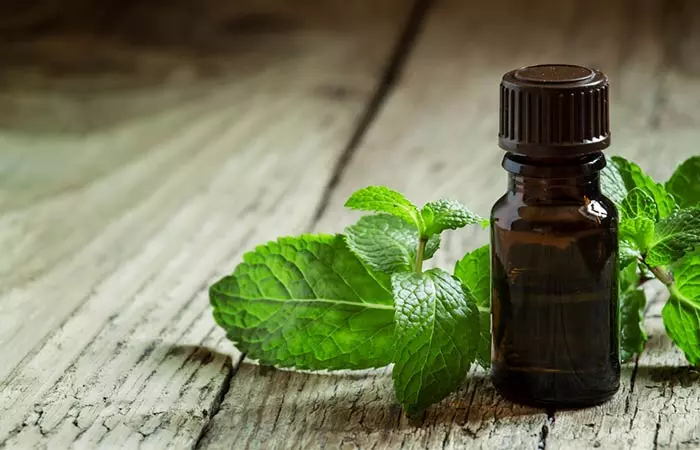
You Will Need
- 4-5 drops peppermint oil OR eucalyptus oil
What You Have To Do
- Mix the two oils together and apply on the chest, neck, and forehead.
- Leave it for as long as possible.
Another way to use essential oils is to opt for a steam bath with water infused with essential oils. Fill a bathtub or bucket with warm water. Then add a few drops of essential oils in it. Bathe in the water and obtain the benefits. You may also use a diffuser to spread the aroma of essential oils all over the room and house. This will offer relief to your nose and help kill bacteria or virus in the air.
How Often You Should Do This
Apply the essential oil blend twice a day.
Why This Works
The essential oils are not only good for a relaxing body massage, but they also come in handy in offering relief from cold symptoms.
While eucalyptus oil helps overcome nasal congestion, peppermint oil functions as a nice expectorant (5, 6). Oregano oils work by killing the virus with its antiviral activity (7). The aromas of these oils help soothe your nerves and provide a sense of relaxation.
4. Garlic For Common Cold
You Will Need
- 1-2 garlic cloves
- 1 tablespoon honey
What You Have To Do
Crush the garlic and ingest it along with the honey.
How Often You Should Do This
Repeat this twice a day.
Why This Works
Garlic, a common kitchen ingredient, is known for its numerous beneficial properties for human health. A few studies have indicated that it can be used to expedite relief from cold. It has antimicrobial and antiviral compounds that can kill the cold-causing virus and alleviate the symptoms (8).
Tanya Murray, a blogger, makes a special concoction with garlic, lemon, ginger, cayenne pepper, and honey to treat symptoms of common cold in the winter. She explains how it works: “The brew’s ingredients will work away, and the whole concoction will work to hasten the excretory action through every part of your body; lungs, nose, skin, bladder and bowel (i).”
5. Ginger For Common Cold

You Will Need
- An inch-long ginger piece
- A cup of hot water
- 1 teaspoon honey
What You Have To Do
- Crush the ginger piece and let it soak in hot water for a few minutes.
- Strain the water, add honey, and mix well.
- Drink this freshly prepared ginger tea.
Ginger paste or shredded ginger can also be mixed with hot soups and stews to enhance the flavor and boost its cold-fighting effect.
How Often You Should Do This
Have 2-3 cups of ginger tea in a day.
Why This Works
Ginger is another household cooking ingredient that can be used to bring quick relief from cold symptoms by providing relief from the chills and warming up the body (9). It has an aroma that is soothing to your nose. Besides, ginger is also known for its potent anti-inflammatory properties. Its natural spiciness helps clear congestion in the nasal passage to an extent (10).
6. Green Tea For Common Cold
You Will Need
- 1 green tea bag
- A cup of hot water
- Honey
- Lemon juice
What You Have To Do
- Brew some green tea by steeping the tea bag for 3-5 minutes.
- Add honey and/or lemon juice for taste and sip on this healthy herbal tea.
How Often You Should Do This
Drink 2-3 cups in the day.
Why This Works
Drinking hot beverages will help loosen sinus secretions. Studies have indicated that those who drink warm beverages during cold get quick relief from cold symptoms like a runny nose, sore throat, and fatigue (11). Drinking green tea is advisable as it contains plenty of antioxidants that can speed up recovery (12).
7. Honey For Common Cold
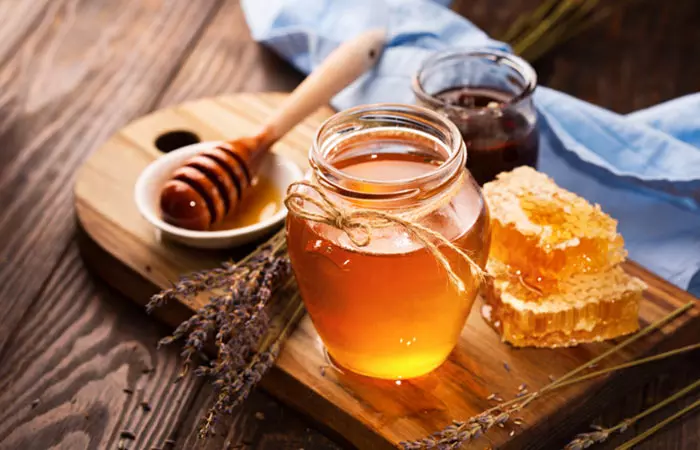
You Will Need
1 tablespoon raw honey
What You Have To Do
Simply ingest the honey. Honey can also be added to a glass of warm milk and had before going to bed.
How Often You Should Do This
Eat honey twice a day.
Why This Works
Honey is known for its potent healing and antiviral properties. It can be effective in treating cold and soothing sore throat. Its antioxidants help the immune system battle virus or bacteria that cause cold (13).You should take raw or organic honey to get the maximum benefits in this regard.
8. Best Juices For Common Cold
Drinking cranberry juice and orange juice during infections such as cold and cough is often recommended by doctors. These juices supply essential nutrients, vitamins, and antioxidants to the body. These nutrients strengthen the immune system and help the body to fight the viral infection better and faster (14, 15). Lemon juice can also be included in the daily diet as it can supply the body with vitamin C which is essential for an efficient immune response against the cold virus (16). Simple ways to include lemon juice would be adding it to salads and herbal teas.
9. Kombucha For Common Cold
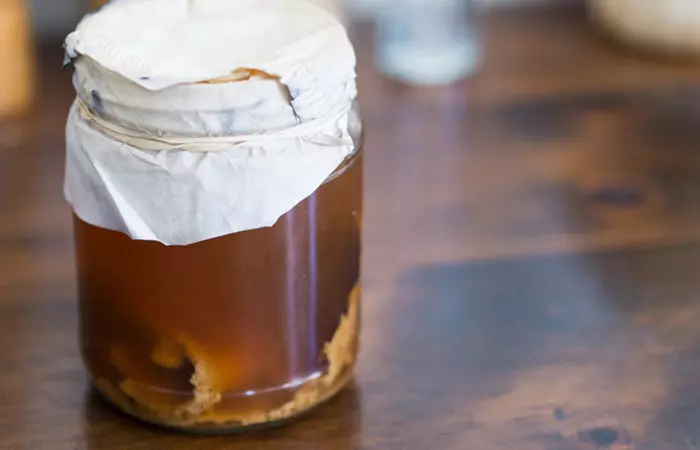
This version of black tea contains a wide range of biologically active compounds and organic acids. It possesses antimicrobial and pH-balancing properties that can enhance immune health as well as cardiovascular health. This fermented tea is mostly available in organic stores and can be had on a daily basis. Its components can bring about the effective elimination of the cold virus from the body while detoxifying the body of the harmful substances that have accumulated due to the sickness (17).
 Trivia
Trivia10. Kadha Recipe For Common Cold
You Will Need
- 2 cups water
- 1-1.5 inch piece ginger
- 2 black peppercorns
- 5-6 holy basil leaves
- 4 cloves
- 1 teaspoon honey
What You Have To Do
- Crush the ginger, peppercorns, basil leaves, and cloves.
- Add water to this and boil the water until the volume reduces to half.
- Strain the decoction, add honey, and drink this.
The strained herbs and spices can be used to prepare ‘kadha’ for one more time.
How Often You Should Do This
Have a cup or two of this in the day.
Why This Works
A ‘kadha’ is basically a herbal tea prepared in most Indian homes to treat cold, cough, and similar respiratory system related issues. The spices in the decoction clear up the sinuses and exert antiviral effects on the cold virus (18, 19, 20).
11. Onion For Common Cold
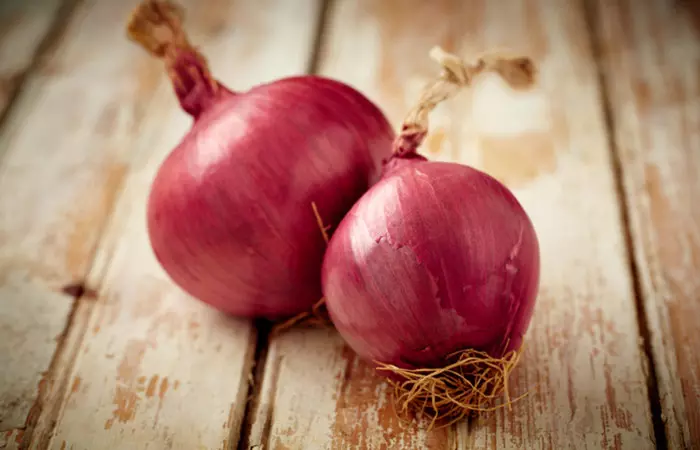
You Will Need
- 1 red onion
- Honey
What You Have To Do
- Peel the onion and cut slices.
- Pour enough honey to cover the slices.
- Leave this overnight in an air-tight container in a cool place.
- Eat 1-2 honey-soaked onion slices in the morning.
How Often You Should Do This
Have 1-2 slices twice a day. You can also consume the leftover honey once the slices get over.
Why This Works
Onions are anti-inflammatory and antimicrobial agents, and also expectorants. This means that they loosen up the mucus that has accumulated in your nasal passages and chest so that it can be easily eliminated from the body. They also help to restore the respiratory passages to the original state by alleviating the swelling caused by the viral infection (21, 22).
12. Vitamins For Common Cold
You Will Need
Vitamin C and vitamin D supplements
What You Have To Do
Take them as directed on the package for your age.
How Often You Should Do This
Have these supplements daily and also continue them after the cold is gone to aid in the full recovery of the body.
Why This Works
Both of these vitamins are essential for the immune system to perform to its best abilities. They promote immune response when they are present in the required amounts in the body (23, 24).
13. Yogurt For Common Cold
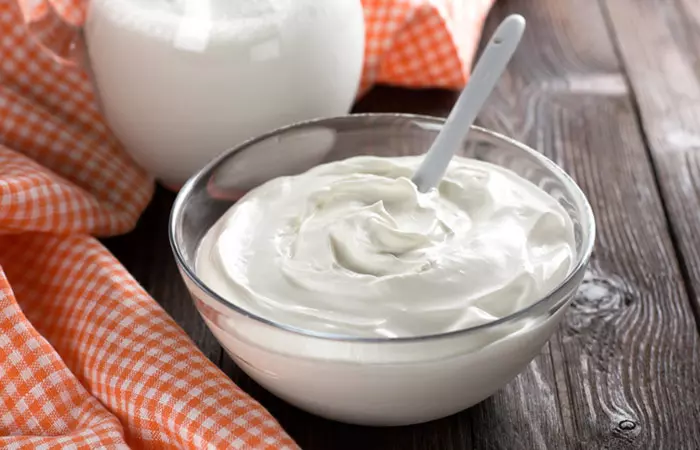
You Will Need
Plain yogurt
What You Have To Do
Have a cup with meals or in between meals.
How Often You Should Do This
Eat 1-2 cups of yogurt in a day.
Why This Work
Yogurt is beneficial in every season of the year. When suffering from a cold, the probiotics present in yogurt can help to reduce the inflammation within the body and also reduce the cold symptoms (25). You can also take a high-quality probiotic supplement, daily, instead.
14. Turmeric Milk For Common Cold
You Will Need
- 1 teaspoon turmeric powder
- A glass of hot milk (almond, rice, cashew, or coconut milk)
What You Have To Do
- Add the turmeric to the milk and mix well.
- Drink this before going to bed.
How Often You Should Do This
Repeat this every night until the cold goes away.
Why This Works
Turmeric contains curcumin which has antibiotic and antioxidant properties. Drinking warm milk containing this beneficial herb can give relief from cold and cough (26).
15. Soup
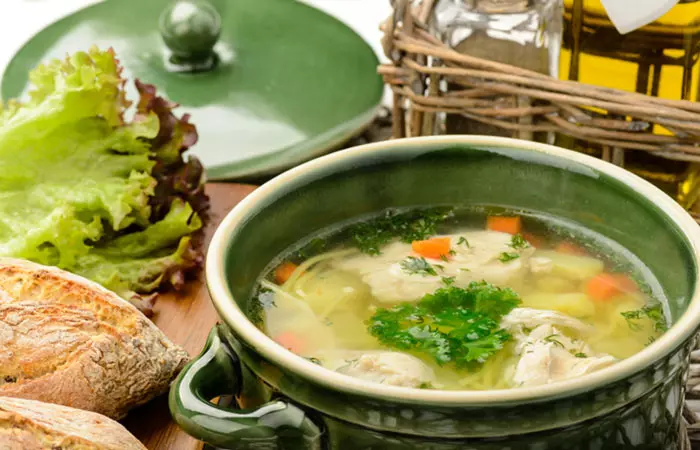
Apart from tea, you can also have hot soup, broth, and stew to get rid of cold symptoms quickly. You may opt for homemade vegetable soup and chicken soups, for example. Chicken soup has long been used as a home remedy for cold, since chicken is a good source of zinc (1). Remember how your mom used to give you chicken soup when you had a cold as a child? Well, she did understand the benefits of this home remedy. Studies have shown that chicken soup consumption can limit the generation of white blood cells that aggravate cold symptoms (27). Also, the fumes from the soup will thin the mucus and help it flow out of your nose, and the nutrients present will boost your energy levels and provide hydration.
16. Elderberry For Common Cold
You Will Need
Elderberry syrup
What You Have To Do
Drink one to two teaspoons of this syrup.
How Often You Should Do This
Have this once every day.
Why This Works
Elderberry is a herb that has been used for a long time to treat cold and flu. It contains bioflavonoids that act as immunity boosters. Elderberry also has anti-inflammatory properties that help battle swelling in the sinuses (28, 29).
Caution
For safety reasons, pregnant women and children should not be given elderberry without medical advice.
17. Humidifier
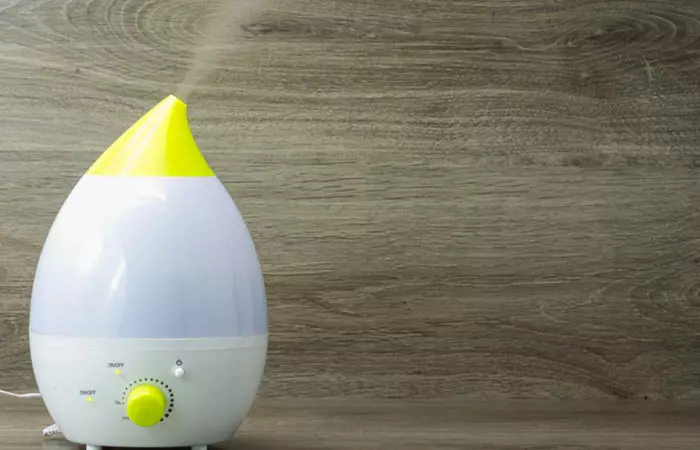
A dry indoor environment can make you feel uncomfortable when you are suffering from a cold. You will find your nasal passage getting dry, and this can cause irritation. Also, dry nasal passages provide an ideal environment for the virus to proliferate and make your cold worse. Run a humidifier in the room to supply moisture to the air inside and this will keep your nose and nasal tissue moist.
18. Baking Soda For Common Cold
You Will Need
- 1/2 teaspoon baking soda
- A glass of cool water
What You Have To Do
Mix the baking soda in the water and drink it immediately.
How Often You Should Do This
Repeat this six times on day one at two-hour intervals. On day two, drink this four times throughout the day at equal intervals. On day three, take two doses one in the morning and one in the evening. From day four onwards, drink this baking soda water once every morning until the cold is gone.
Why This Works
Baking soda restores the pH balance of the body fluids making it an unsuitable environment for the virus to survive in (30).
19. Black Pepper For Common Cold
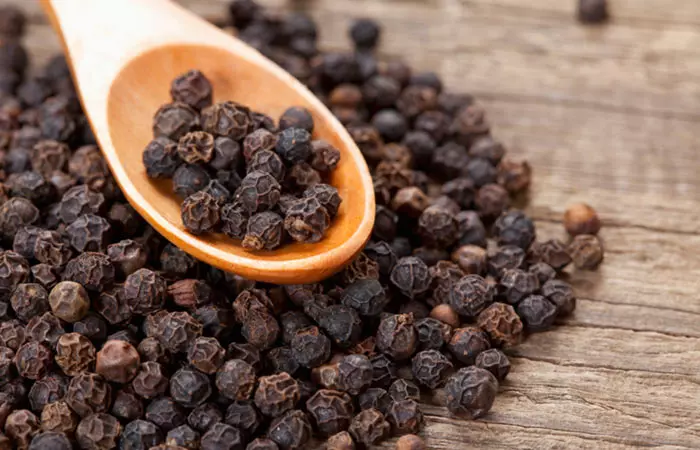
You Will Need
- 1/2 teaspoon freshly ground black pepper
- A glass of lukewarm water
What You Have To Do
- Mix the pepper powder in the water. Stir well.
- Drink this concoction.
How Often You Should Do This
Repeat it after a few hours if required.
Why This Works
Ingesting black pepper will stem the flow of mucus and also stop the sneezing. It will also give relief from the pain in your throat and the cough (31).
20. Cinnamon For Common Cold
You Will Need
- 1/2 teaspoon cinnamon powder
- 1 tablespoon organic honey
What You Have To Do
- Add the cinnamon to the honey and mix them together.
- Eat this.
How Often You Should Do This
Repeat this twice a day.
Why This Works
Cinnamon has antiviral and anti-inflammatory properties that treat the infection and give relief from cold symptoms (32).
21. Grapefruit Seed Extract For Common Cold
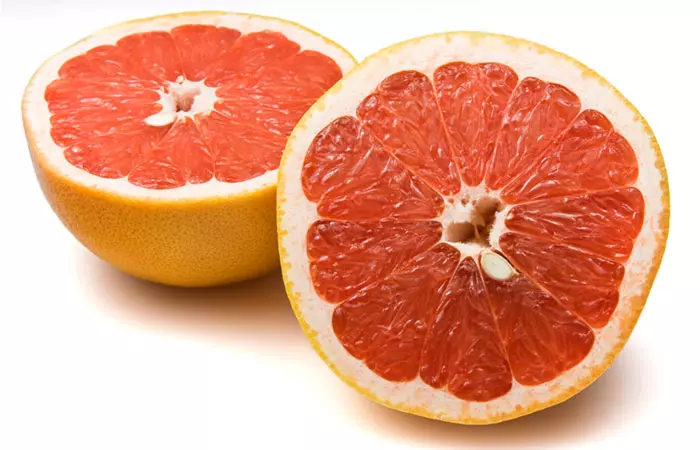
You Will Need
- 10-15 drops grapefruit seed extract
- 5 oz. water
What You Have To Do
- Add the extract to the water and mix well.
- Drink this.
For children, add 3-5 drops of the extract in the same quantity of water.
How Often You Should Do This
You can drink this up to three times a day.
Why This Works
The antimicrobial properties of grapefruit seed extract can be helpful to get rid of the viral infection (33).
22. Olive Leaf Extract For Common Cold
You Will Need
1 teaspoon olive leaf extract
What You Have To Do
Take the extract with food.
How Often You Should Do This
Ingest this three times a day, along with your meals.
Why This Works
Oleuropin, a key component found in the leaves of the olive tree, possesses many properties. It has been shown to exert antiviral effect against different respiratory viruses. It also reduces inflammation in the airways (34).
23. Fish Oil For Common Cold

Fish oil supplements are recommended by doctors for various inflammatory issues. This is because this oil contains omega-3 fatty acids which possess anti-inflammatory properties (35). When it comes to treatment of cold, this supplement is beneficial as it opens up the respiratory passages and reduces the swelling in the nasal linings. This improves the flow of air and eases various symptoms of viral respiratory infections such as cold.
24. Gargling With Hot Water
You Will Need
- A glass of hot water
- 1 teaspoon salt
What You Have To Do
Mix the salt with water and gargle with this.
How Often You Should Do This
Repeat this twice a day.
Why This Works
Gargling with hot water can help soothe a sore throat which commonly accompanies cold. The water hydrates your throat, and the salt helps cope with the infection (36). Salt water gargle is an easy solution for a sore throat and dry cough.
25. Chamomile For Cold
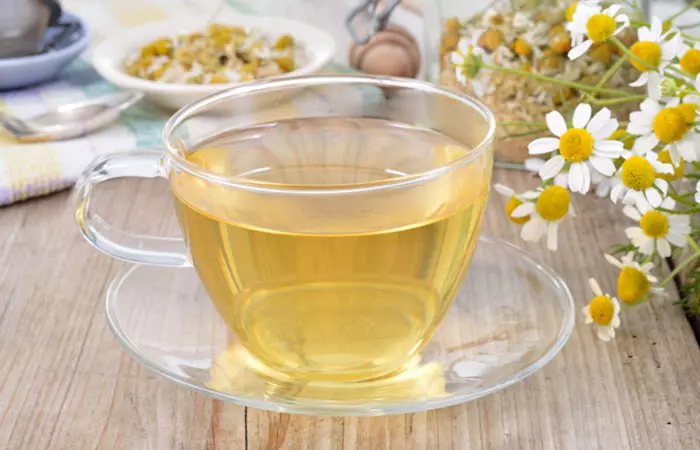
You Will Need
- 1 chamomile tea bag
- A cup of boiling water
What You Have To Do
- Steep the tea bag in hot water for 4-5 minutes.
- Remove the tea bag and drink the tea.
You may also use steam inhalation using chamomile leaves in warm water. Fill a pot with hot water and then drop some dried or fresh chamomile leaves in it. Now, lean over the pot and inhale the steam vapor. Try this twice a day for expediting relief from cold.
How Often You Should Do This
Have two cups of chamomile tea every day until the cold goes away.
Why This Works
Chamomile has ingredients that clear lungs and airways. The herb also has anti-inflammatory and antibacterial properties (37).
26. Fenugreek For Common Cold
You Will Need
- 1 tablespoon fenugreek seeds
- A glass of water
- Honey
What You Have To Do
- Boil the fenugreek seeds in water for a few minutes.
- Let this cool down, add honey, and mix well.
- Drink this water while it is still warm.
How Often You Should Do This
This decoction can be had up to two times in a day.
Why This Works
Fenugreek, a common kitchen ingredient, can be used to get relief from common cold. Like most ingredients in this article, it has antimicrobial and anti-inflammatory properties (38).
27. Pomegranate Juice For Common Cold
You Will Need
- Fresh pomegranate seeds (from 1-2 pomegranates)
- Water (optional)
What You Have To Do
- Crush the pomegranate seeds to extract the juice.
- Dilute with a little water if it is too concentrated or strong for your taste.
- Consume it.
How Often You Should Do This
Drink 1-2 glasses of pomegranate juice daily until your cold symptoms improve.
Why This Works
Pomegranate juice is rich in vitamin C, antioxidants, and anti-inflammatory compounds (39). These components can help boost your immune system, reduce inflammation, and provide relief from symptoms of the common cold (40 ). The high vitamin C content aids in fighting off infections and supports overall recovery during a bout of cold (41).
These home remedies are quite good at giving you relief from common cold symptoms. However, if these are not enough, seek professional medical attention. Scroll down to learn more.
When To Seek Medical Attention
Consult a doctor right away if symptoms intensify, last longer than ten days, or are accompanied by chest pain, shortness of breath, or a high temperature. These symptoms may point to complications that need medical attention, such as pneumonia or a bacterial infection. In addition to ensuring an accurate diagnosis, early intervention may prevent the illness from getting worse.
And for the future, focus on prevention to avoid the common cold altogether. Scroll down to know more.
Prevention Tips
The first measures in preventing the common cold are simple yet effective strategies. To stop germs from spreading, wash your hands often with soap and water. Avoid touching your face, particularly your lips, nose, and eyes, and stay away from those who are sick. A balanced diet, consistent exercise, enough sleep, and stress reduction are all effective ways to keep your lifestyle healthy and boost your immune system. By taking these precautions, you may significantly decrease your chance of getting a cold.
Infographic: 5 Natural Ways To Treat The Common Cold
The common cold is one of the most prevalent illnesses that brings with it a runny nose and heavy head. It can throw you off your daily routine and make you feel under the weather. The good news is you can reduce its severity with some simple ingredients from your kitchen. Check out the infographic below to know more!

Illustration: StyleCraze Design Team
The common cold is a viral infection with symptoms such as sneezing, coughing, headache, sore throat, nasal congestion, and body ache. It is a self-limiting infection, meaning that you can expect the symptoms to go away on their own within a week or so, after some proper rest. While medication is not necessary, you may apply some home remedies for common cold to get relief from the symptoms and accelerate the recovery process. There are a variety of easily available ingredients and kitchen staples that you can use, including apple cider vinegar, echinacea extract, essential oils, fruit and vegetable juices, herbs and spices, and honey.
Here are some frequently asked questions about cold answered for you.
Frequently Asked Questions
Head Cold Vs Chest Cold?
While all colds are due to viral infections, what makes a head cold different from a chest cold are the symptoms observed. Head cold involves symptoms in the head such as a headache (or heaviness in the head), runny nose, and watery eyes. In a chest cold, the congestion in the lungs is most prominent along with a cough.
Why Antibiotics Can’t Help Treat Common Cold?
An antibiotic is meant to work against bacterial infections. Since cold is a viral infection, there is no point in taking an antibiotic for it as it will have no effect on the virus.
Is There A Vaccine Available For The Common Cold?
No, there is no vaccine for the common cold. Cold can be caused by more than 200 types of viruses and making a vaccine that works against all o
Why Do You Sneeze When You Have A Cold?
To counter the attack of the virus on the nasal cells, the body produces natural inflammatory mediators like histamine. These mediators cause the blood vessels to leak and the mucus glands to produce more mucus. This causes irritation in the nose and hence we sneeze.
Is A Cold A Viral Or Bacterial Infection?
Cold is caused by a virus, hence it is a viral infection.
Does A Common Cold Cause Fever?
Fever can or cannot accompany the other symptoms of a cold. If it does, it is usually a low-grade fever.
How Long Are You Contagious When You Have A Cold?
From a day before you experience the cold symptoms up to seven days, you can pass on the virus to another person. In kids, this period can extend up to two weeks.
How Long Does It Take To Get Over A Runny Nose?
It usually takes about 5-7 days to get over a runny nose. If your nose stay runny beyond that, please consult a doctor immediately.
Now that you know how to get rid of a cold quickly, what are you waiting for? Do try these home remedies for common cold the next time you are down with one.
Sometimes, you would have to use a combination of a few remedies to get an even faster relief from the symptoms. While using the remedies, eat a healthy diet containing plenty of fruits and vegetables. The nutrients from these will boost your immune system.
We hope this post has helped you. Do tell us by commenting in the box given below.
What day is the worst with a cold?
While a common cold lasts between 3 to 10 days, the 4th day is considered the worst in the cycle because the symptoms are at their peak and your body is very weak. It is recommended that you avoid interactions with other people during this time.
Learn how to use natural ingredients to combat the common cold! Click on the video below to get simple tips on how to fight off colds and stay healthy.
Personal Experience: Source
StyleCraze's articles are interwoven with authentic personal narratives that provide depth and resonance to our content. Below are the sources of the personal accounts referenced in this article.
i. My Common Cold Recipe from Dorothy Hallhttps://suburbanjubilee.blogspot.com/2011/07/my-common-cold-recipe-from-dorothy-hall.html
References
Articles on StyleCraze are backed by verified information from peer-reviewed and academic research papers, reputed organizations, research institutions, and medical associations to ensure accuracy and relevance. Read our editorial policy to learn more.
- Fever in children: overview
https://www.ncbi.nlm.nih.gov/books/nbk279455/#symptoms - Common cold
https://medlineplus.gov/ency/article/000678.htm - Varieties production composition and health benefits of vinegars: a review
https://www.sciencedirect.com/science/article/abs/pii/S0308814616318076?via%3dihub - Myth or reality—transdermal magnesium?
https://www.ncbi.nlm.nih.gov/pmc/articles/PMC5579607/ - Essential oils in the treatment of respiratory tract diseases highlighting their role in bacterial infections and their anti‐inflammatory action: a review
https://www.ncbi.nlm.nih.gov/pmc/articles/PMC7163989/ - Essential oils in the treatment of respiratory tract diseases
https://www.ncbi.nlm.nih.gov/pmc/articles/PMC7163989/ - Antiviral activity of the lippia graveolens (mexican oregano) essential oil and its main compound carvacrol against human and animal viruses
https://www.ncbi.nlm.nih.gov/pmc/articles/PMC3768712/ - Antimicrobial properties of allicin from garlic
https://pubmed.ncbi.nlm.nih.gov/10594976/ - The effect of ginger on serotonin induced hypothermia and diarrhea
https://pubmed.ncbi.nlm.nih.gov/2074539/ - The amazing and mighty ginger
https://www.ncbi.nlm.nih.gov/books/nbk92775/ - The effects of a hot drink on nasal airflow and symptoms of common cold and flu
https://pubmed.ncbi.nlm.nih.gov/19145994/ - Beneficial effects of green tea: a literature review
https://www.ncbi.nlm.nih.gov/pmc/articles/PMC2855614/ - Treating cough and cold: guidance for caregivers of children and youth
https://www.ncbi.nlm.nih.gov/pmc/articles/PMC3223897/ - Consumption of cranberry polyphenols enhances human γδ-T cell proliferation and reduces the number of symptoms associated with colds and influenza: a randomized placebo-controlled intervention study
https://www.ncbi.nlm.nih.gov/pmc/articles/PMC3878739/ - Bioavailability and antioxidant effects of orange juice components in humans
https://www.ncbi.nlm.nih.gov/pmc/articles/PMC2533031/ - Citrus limon (lemon) phenomenon—a review of the chemistry, pharmacological properties, applications in the modern pharmaceutical, food, and cosmetics industries, and biotechnological studies
https://www.ncbi.nlm.nih.gov/pmc/articles/PMC7020168/ - Food source information
https://www.chhs.colostate.edu/fsi/ - Clove (syzygium aromaticum): a precious spice
https://www.ncbi.nlm.nih.gov/pmc/articles/PMC3819475/ - Indian spices for healthy heart – an overview
https://www.ncbi.nlm.nih.gov/pmc/articles/PMC3083808/ - Tulsi – ocimum sanctum: a herb for all reasons
https://www.ncbi.nlm.nih.gov/pmc/articles/PMC4296439/ - Therapeutic uses and pharmacological properties of garlic shallot and their biologically active compounds
https://www.ncbi.nlm.nih.gov/pmc/articles/PMC3874089/ - Natural remedies for the relief of cold and flu symptoms: the evidence for garlic onion chili and chocolate
https://www.researchgate.net/publication/285900876_natural_remedies_for_the_relief_of_cold_and_flu_symptoms_the_evidence_for_garlic_onion_chilli_and_chocolate - Vitamin C and immune function
https://pubmed.ncbi.nlm.nih.gov/19263912/ - Vitamin effects on the immune system: vitamins A and D take center stage
https://www.ncbi.nlm.nih.gov/pmc/articles/PMC2906676/ - The effect of probiotics on prevention of common cold: a meta-analysis of randomized controlled trial studies
https://www.ncbi.nlm.nih.gov/pmc/articles/PMC3560336/ - Curcumin as an antiviral agent
https://www.ncbi.nlm.nih.gov/pmc/articles/PMC7693600/ - Chicken soup and sickness
https://medlineplus.gov/ency/article/002067.htm - Randomized study of the efficacy and safety of oral elderberry extract in the treatment of influenza a and b virus infections
https://pubmed.ncbi.nlm.nih.gov/15080016/ - Sambucus nigra (black elder) as alternative treatment for cold and flu
https://www.ncbi.nlm.nih.gov/pmc/articles/PMC7347422/ - Baking soda — the everyday miracle
https://oconto.extension.wisc.edu/files/2011/02/baking-soda.pdf - Role of piper nigrum in functional food and nutraceuticals
https://www.sciencedirect.com/science/article/abs/pii/B9780323907941000193 - Cinnamon: a multifaceted medicinal plant
https://www.ncbi.nlm.nih.gov/pmc/articles/PMC4003790/ - Potential role of xylitol plus grapefruit seed extract nasal spray solution in covid-19: case series
https://www.ncbi.nlm.nih.gov/pmc/articles/PMC7645297/ - Oleuropein in olive and its pharmacological effects
https://www.ncbi.nlm.nih.gov/pmc/articles/PMC3002804/ - Fatty acids from fish: the anti-inflammatory potential of long-chain omega-3 fatty acids
https://pubmed.ncbi.nlm.nih.gov/20500789/ - Conventional and alternative medical advice for cold and flu prevention
https://pubmed.ncbi.nlm.nih.gov/20088240/ - Chamomile: a herbal medicine of the past with bright future
https://www.ncbi.nlm.nih.gov/pmc/articles/PMC2995283/ - Investigating therapeutic potential of trigonella foenum-graecum l. as our defense mechanism against several human diseases
https://www.ncbi.nlm.nih.gov/pmc/articles/PMC4739449/ - Could pomegranate juice help in the control of inflammatory diseases?
https://www.ncbi.nlm.nih.gov/pmc/articles/PMC5622718/ - Possible beneficial effects of fresh pomegranate juice in sars-cov-2 infection conditions
https://www.ncbi.nlm.nih.gov/pmc/articles/PMC8917946/ - Physicochemical properties vitamin C content and antimicrobial properties of pomegranate fruit (punica granatum l.)
https://www.researchgate.net/publication/248139952_physicochemical_properties_vitamin_c_content_and_antimicrobial_properties_of_pomegranate_fruit_punica_granatum_l
Read full bio of Dr. Abby Kramer
Read full bio of Kushneet Kukreja
Read full bio of Arshiya Syeda
Read full bio of Dipti Sharma









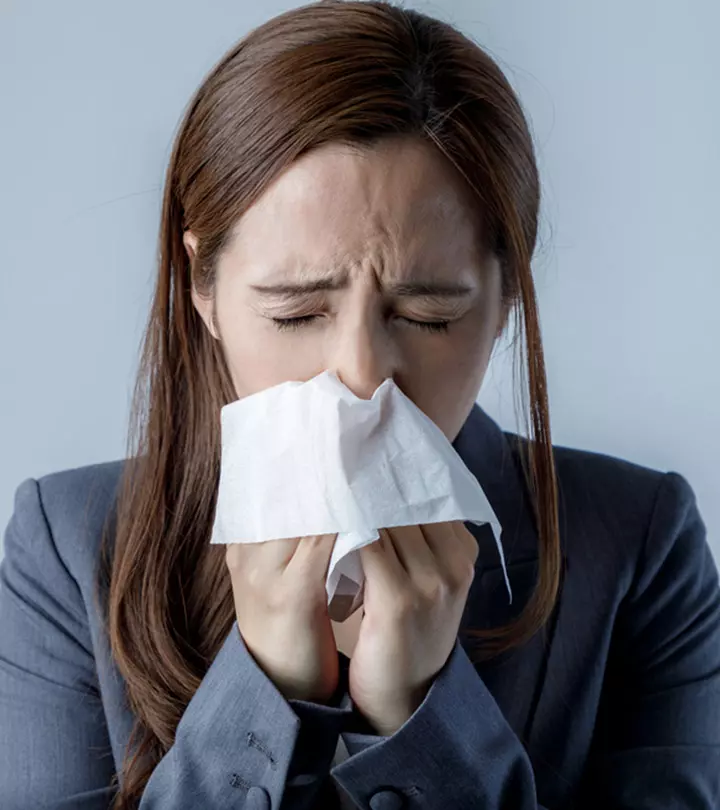

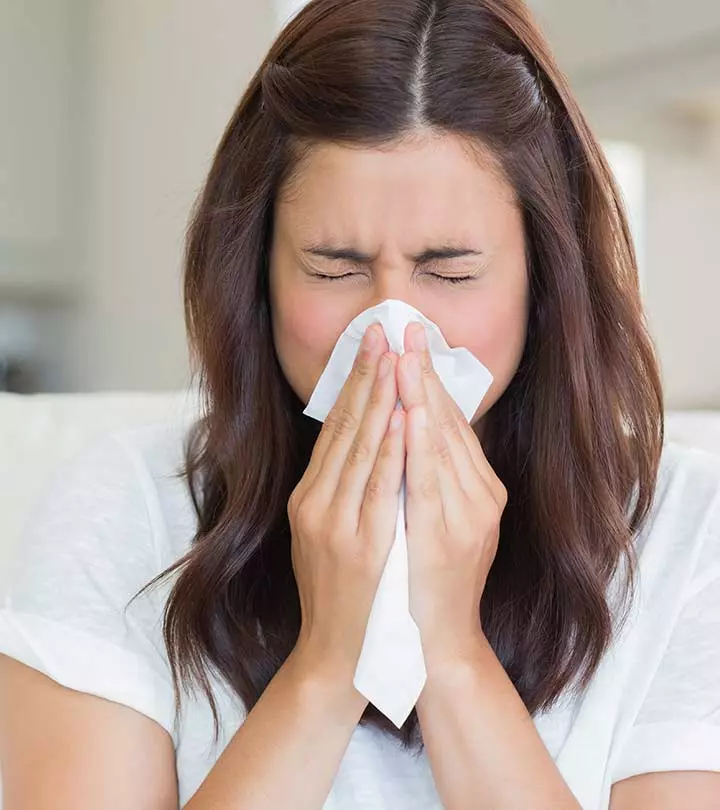


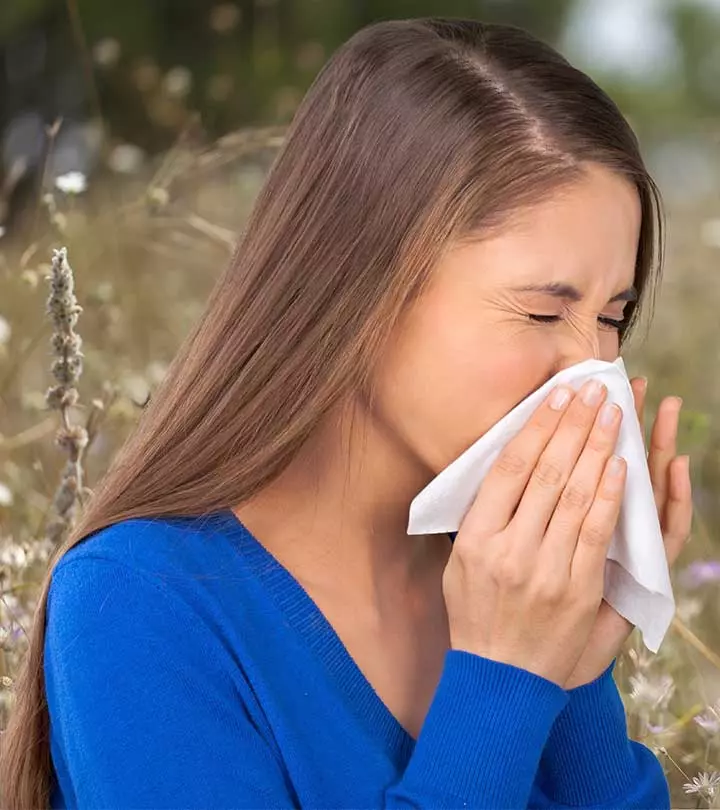










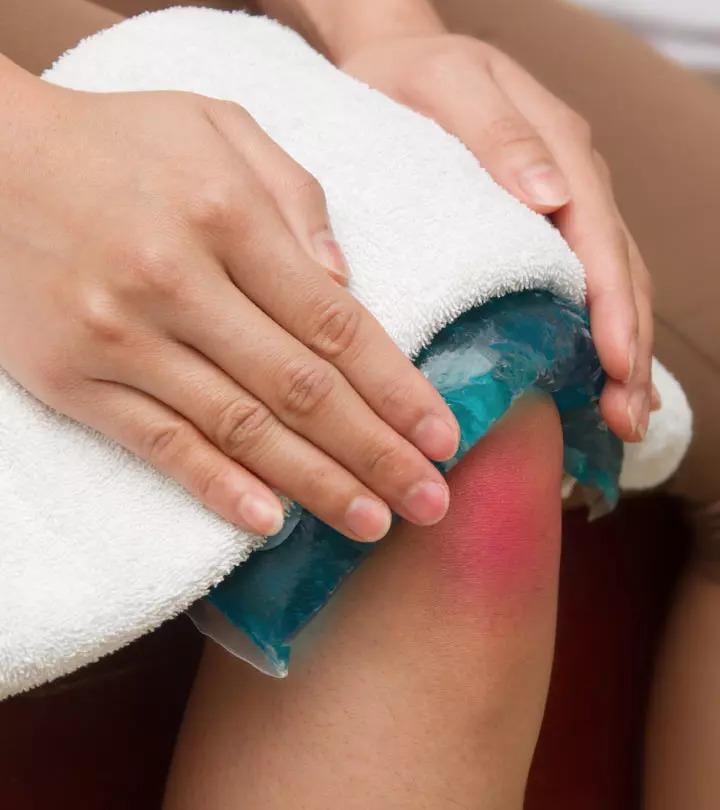

Community Experiences
Join the conversation and become a part of our empowering community! Share your stories, experiences, and insights to connect with other beauty, lifestyle, and health enthusiasts.